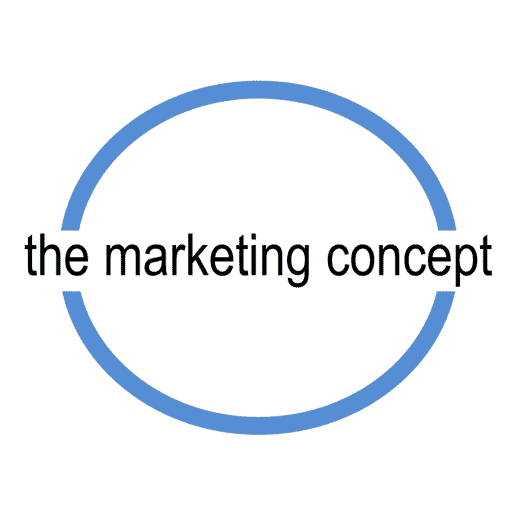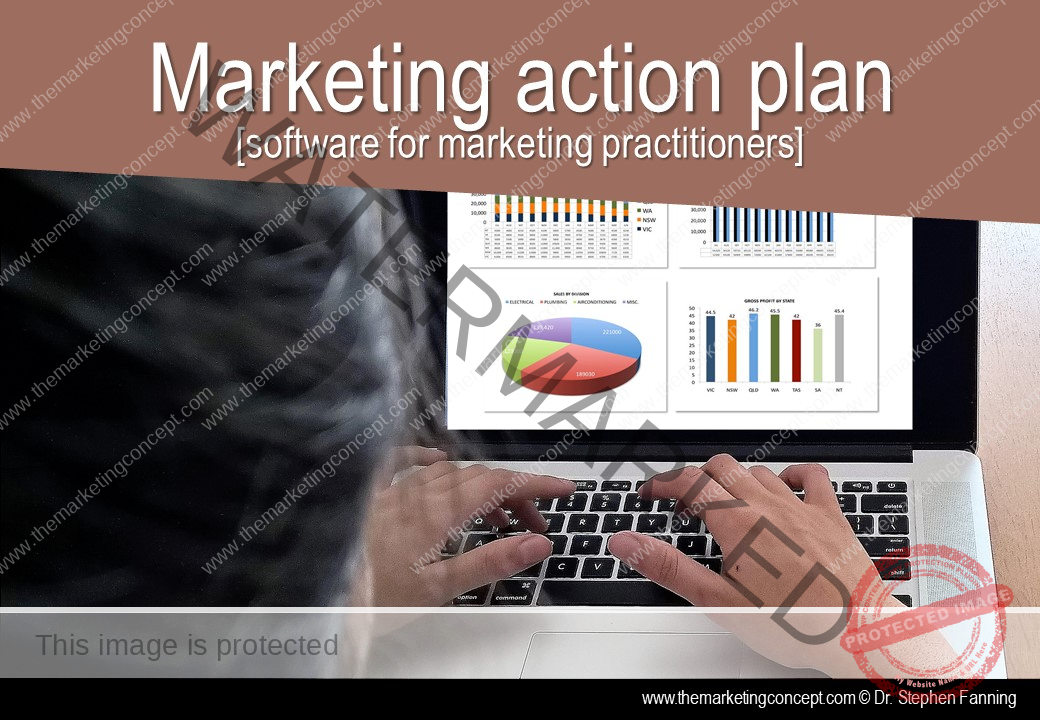
MAP: Software for marketing practitioners
Previously we have discussed technology as a communication tool – now we explore software for marketing practitioners for the CADDIE process – the key takeaway is to ensure that the right software tools are employed to suit the discrete objectives and tasks of different marketing practitioners and their roles.
Overview
When marketing practitioners think of technology they think of ‘marketing through technology’ and ‘marketing of technology’ [i.e., marketing of technology products]. Some refer to marketing through technology as digital marketing and some refer to digital marketing as online marketing, internet marketing or web marketing but most commonly digital marketing. Regardless of the terminology, this activity refers to the functions of marketing that employ technology devices [e.g., smartphones, laptops, tablets, desktops] to reach a customer. However, it also refers to the software and the platforms that facilitate and enable the device to provide a service to the customer.
When we think of the 4 marketing patterns or quests it is clear that technology has and is changing the way society and marketing functions. When we think of the financial, strategic, and communication objectives of marketing practitioners we can see how technology is firmly embedded into marketing.
In this chapter we will set parameters to the broad topic of marketing through technology – to discuss how marketing practitioners employ software to collect data throughout the CADDIE business-marketing planning process.
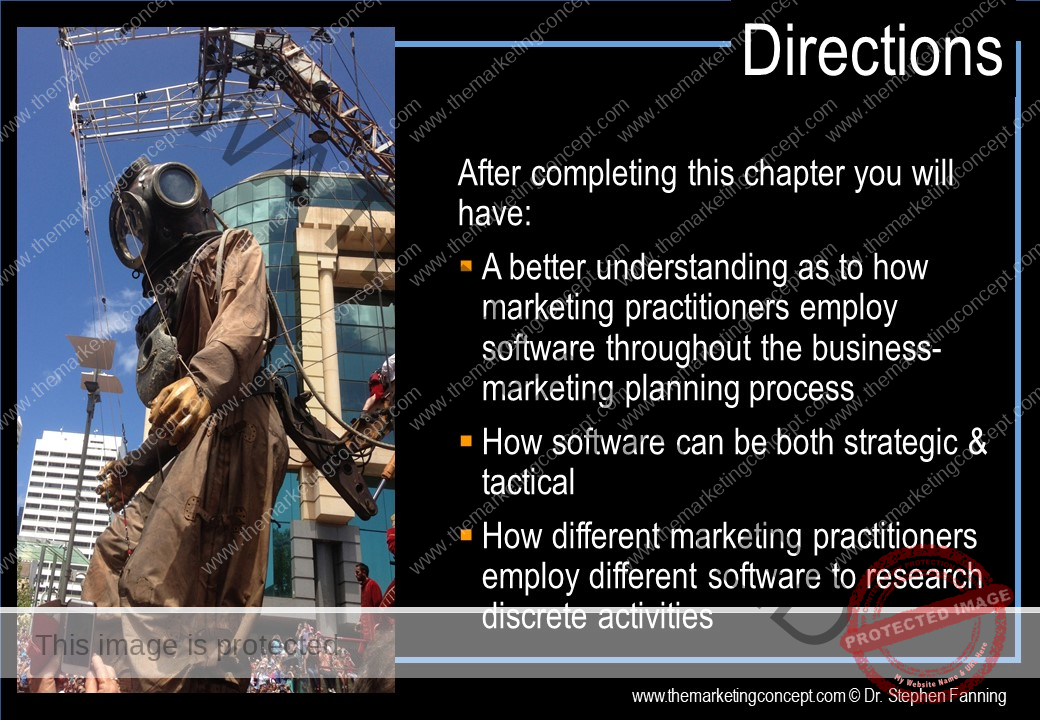
Directions
After completing this chapter you should have an understanding of software for marketing practitioners [SfMP] in contemporary organisations. In particular how SfMP is employed to build profitable exchange relationships. How SfMP is employed to measure marketing metrics and contribute to a marketing audit and the business-marketing planning process including the evaluation and control of tactics. You should also be aware of the challenges involved when introducing a software project.
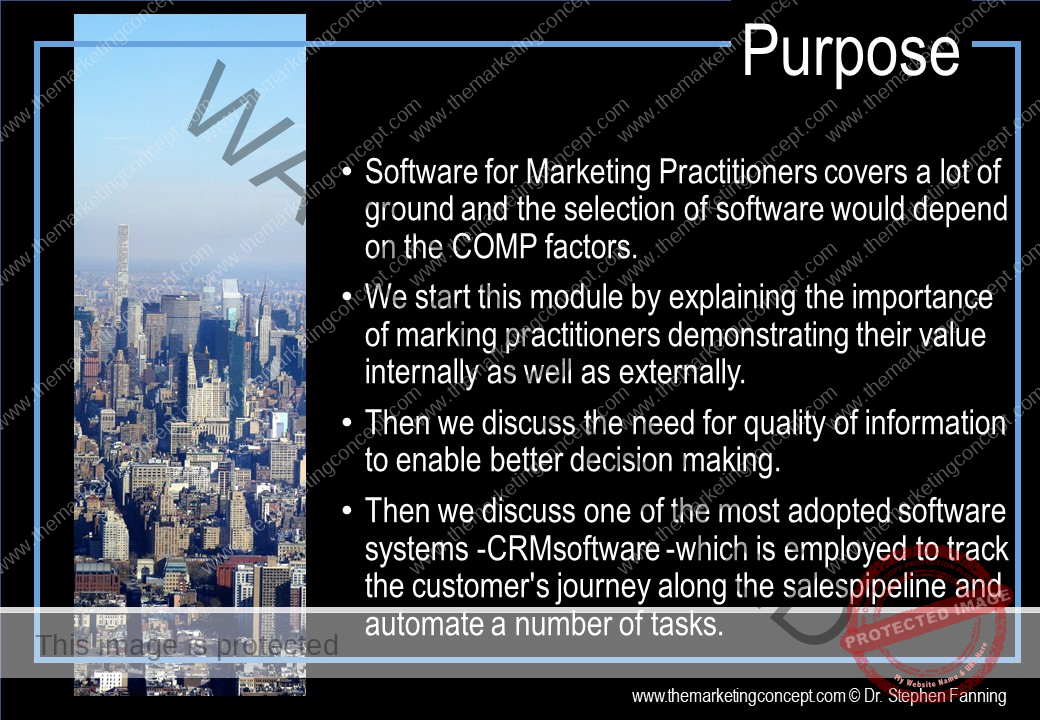
Purpose
As you can see we will not discuss the individual software products that are available but why it is important and why organising the collection of data is important for designing and developing strategies and tactics.
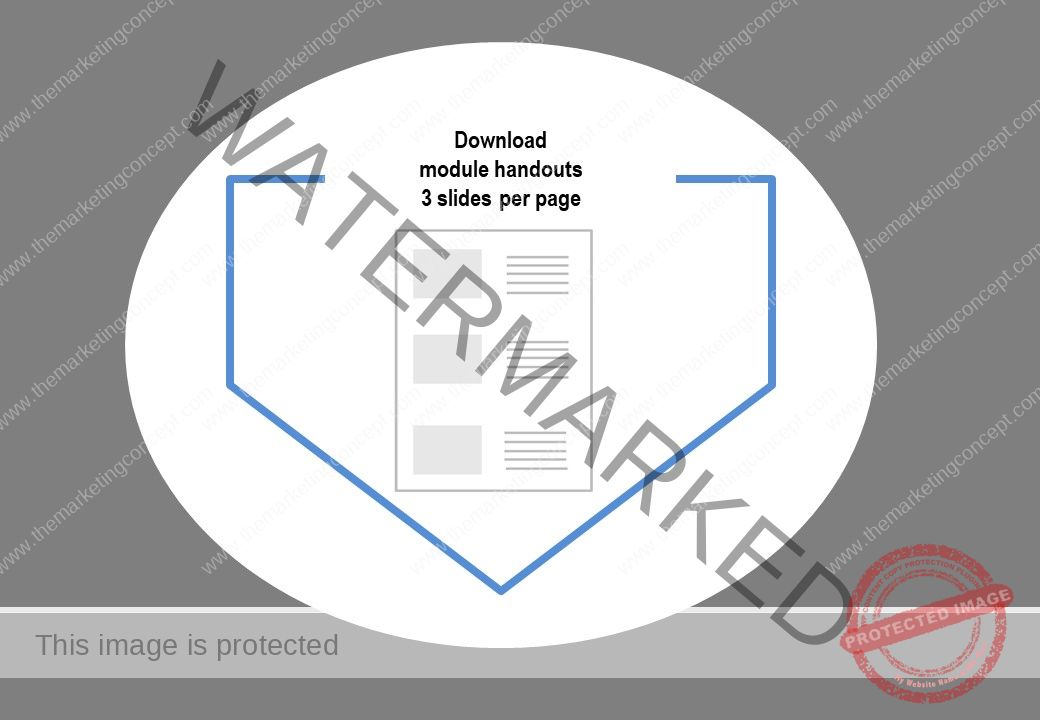
Handouts
Please click on the image to access the handouts
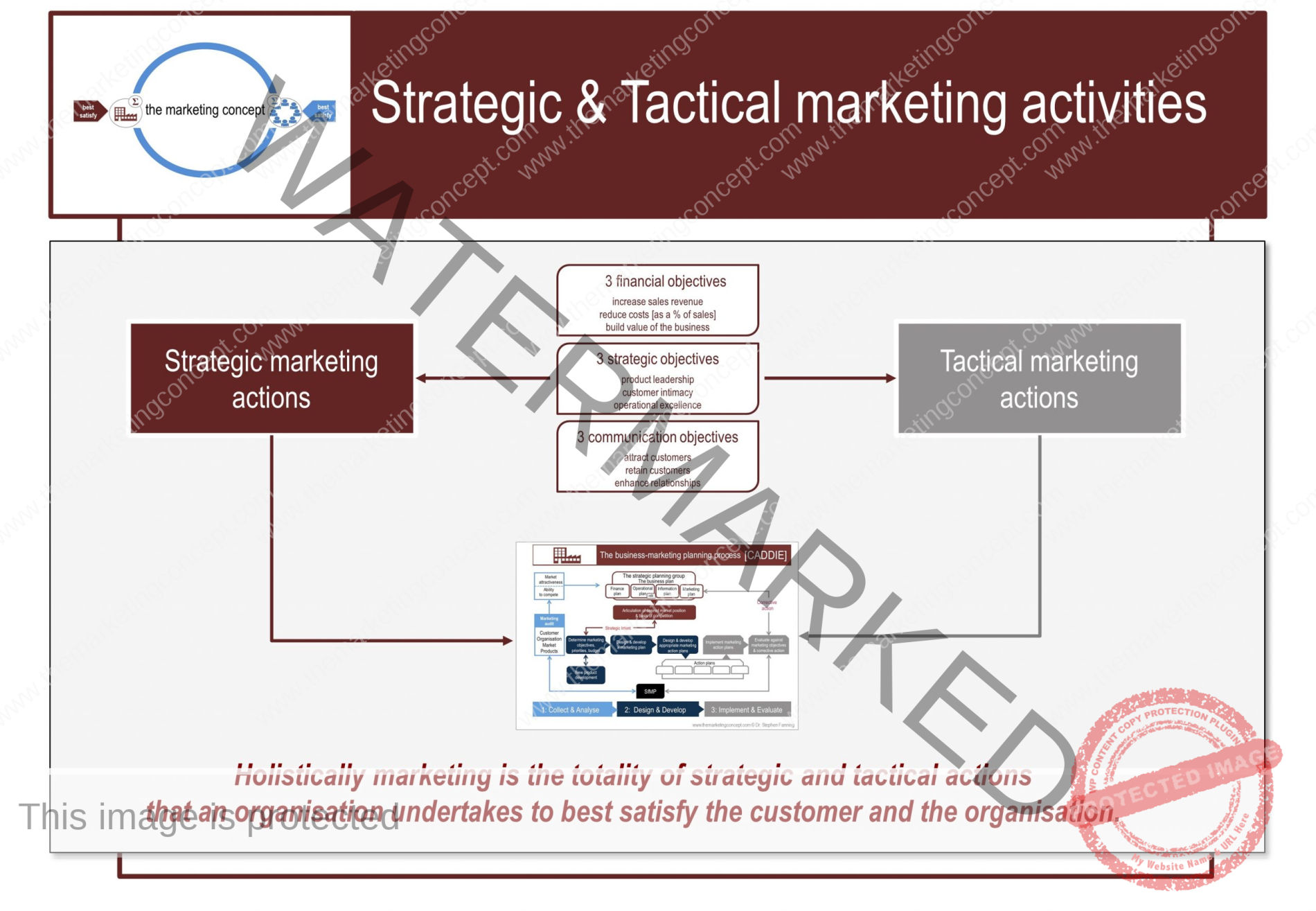
SfMP: strategical and tactical
Marketing is the strategic and tactical actions that an organisation undertakes to best satisfy the customer and the organisation.
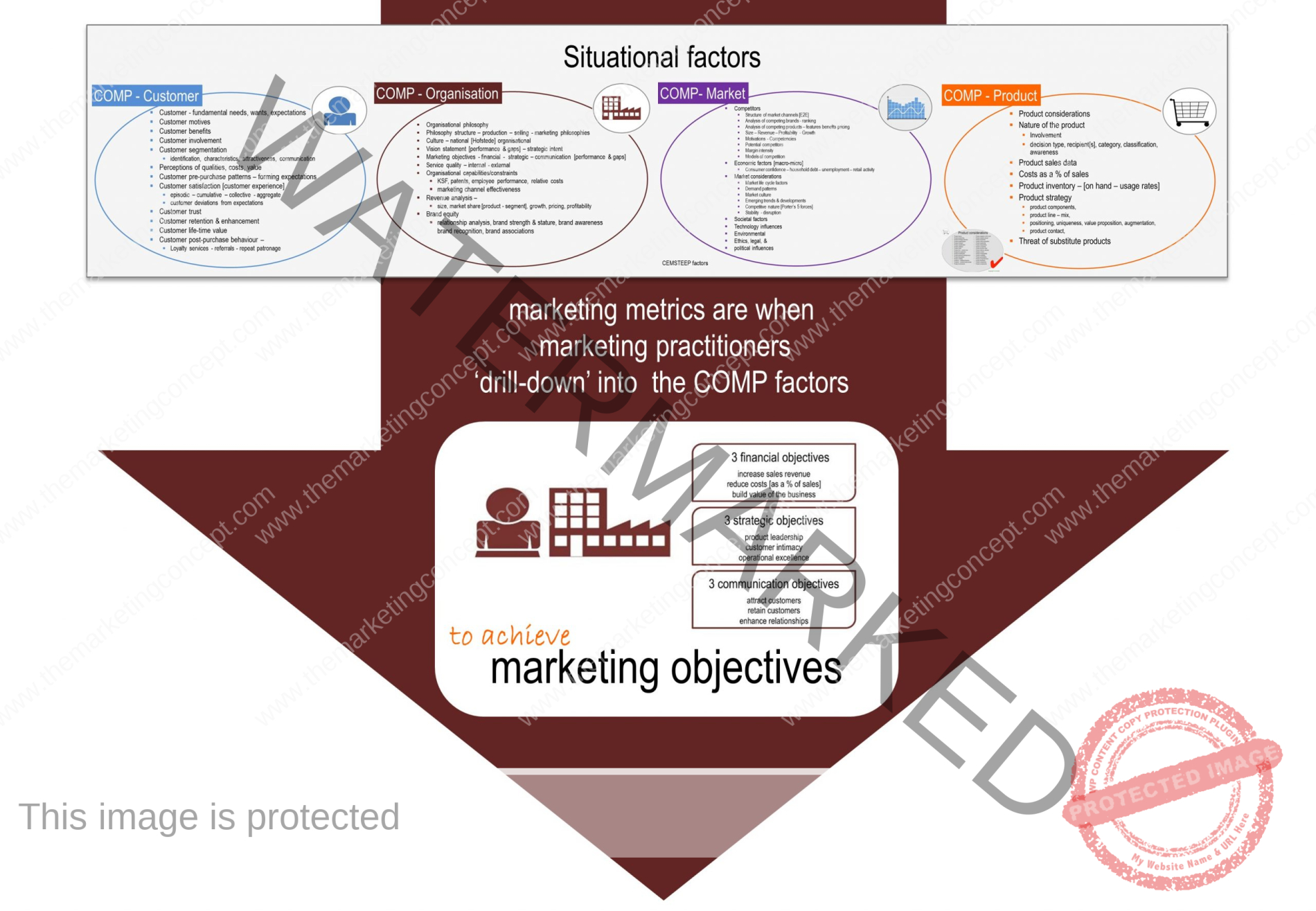
Drilling down into marketing metrics
All organisations are influenced by situational factors. We explore the situational factors through the COMP factors, the characteristics of the customer, organisation, the market, and the product. However, often we have to explore the COMP factors to a greater degree and we do that through what we refer to as marketing metrics.
Activity: 3 important questions
Three questions for marketing practitioners. [1] How much does your organisation spend on attracting new customers? [2] How much does your organisation spend on keeping customers? [3] Then ask what percentage of their business comes from referrals and repeat business.
Clearly managing relationships is a key success factor in many organisations and SfMP is an important relationship tool. We have often stated that there are always situational factors [COMP] that generate exceptions and this applies to SfMP. The software for retailers will be quite different to wholesalers. Even within the retail sectors there will be different software solutions. The applicability also depends on where an organisation is located in the marketing channel [logistic and retailing are quite different].
3-3-6 MAP [software for marketing practitioners]
After completing this chapter you should be able to explain how, software for marketing practitioners [SfMP] can assist marketing practitioners as a facilitating or enabling service to increase effectiveness and efficiency – and, where possible, improve the customer experience. Moreover, you should be able to distinguish between organisation that are ‘marketing through technology’ and marketing of technology’.
As we have discussed throughout the e-book, marketing practitioners are continually collecting, storing, and accessing COMP data. For ‘simplicity’, the place of storage and the service software performs will be referred within this e-book as software for marketing practitioners [SfMP].
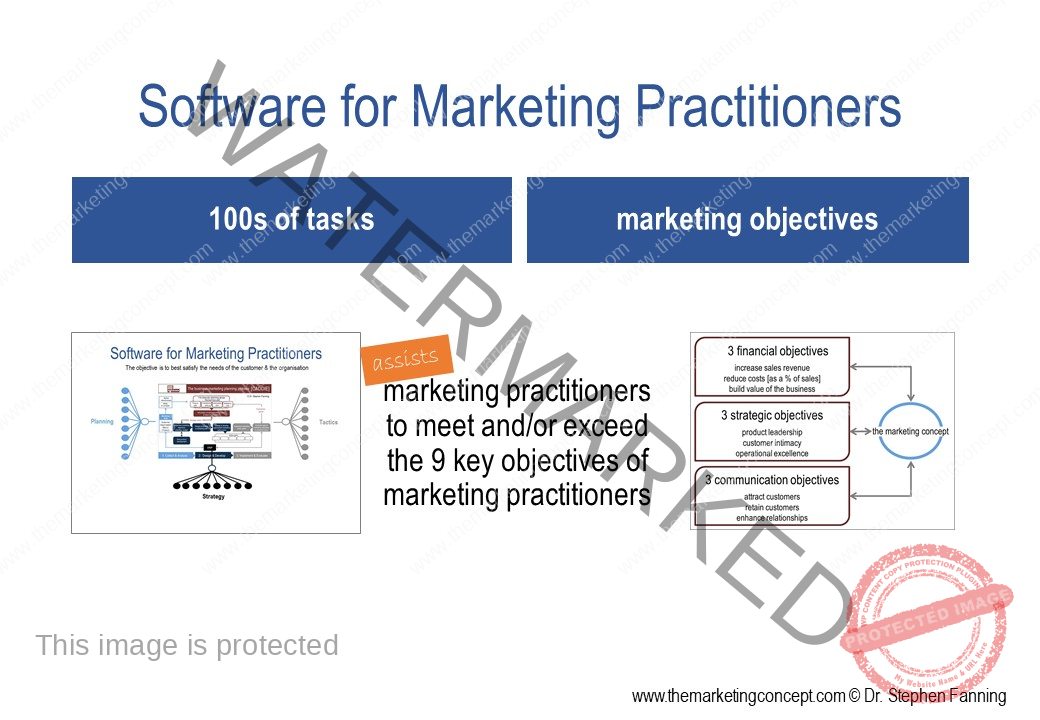
MAP: Software for marketing practitioners
There are many activities where decisions can only be made with access to the right data – think sales by day,
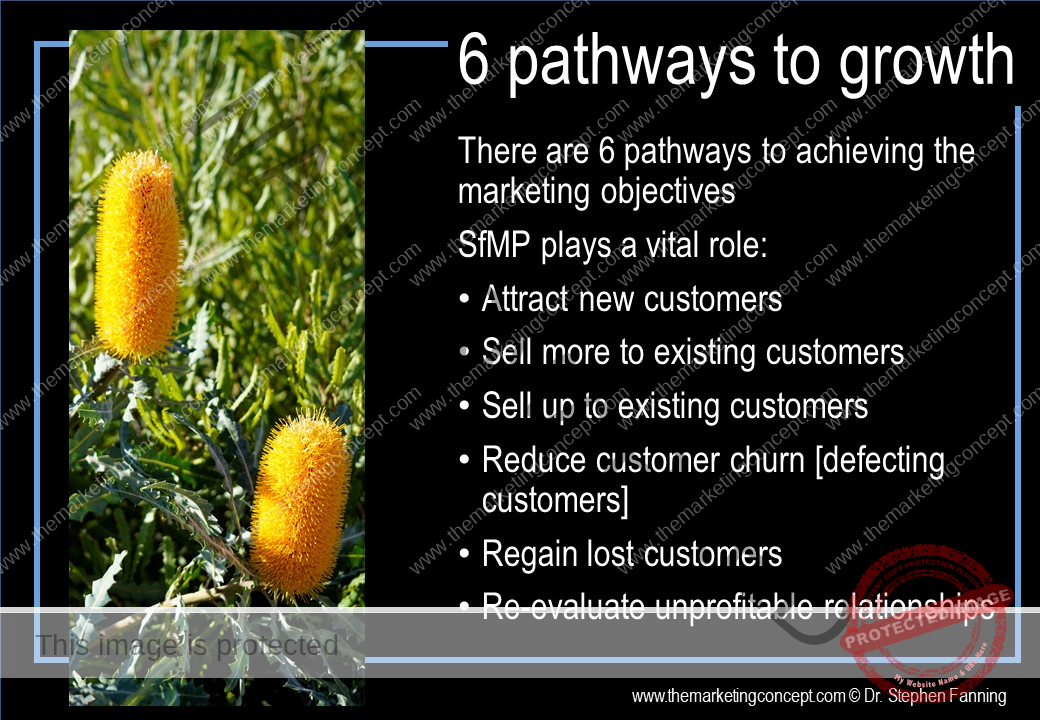
Pathways to growth
If we revisit our contemporary definition of marketing, we will recognise that a key marketing objective is to achieve profitable exchange relationships. We may also recall that there are six pathways to achieving the financial marketing objectives of an organisation.
Pathways to growth
all six involve a relational approach to customers. It is common that organisations focus on attracting new customers and give scant attention to customer retention [discussed in detail in a previous module] and on the more complex task of relationship building. A relational approach to marketing goes beyond the emails and communication messages we recieve every day. Marketing adopts an holistic approach to conducting business and therefore a relational approach can be embedded within every activity and be directed towards attracting new customers, enhancing the relationship with customers, and building the value of the business. Software for marketing practitioners can assist marketing practitioners to manage front-stage and back-stage activities more efficiently and effectively and thus lead to a better customer experience and increased satisfaction. Furthermore, when appropriate a reward programme could be considered.
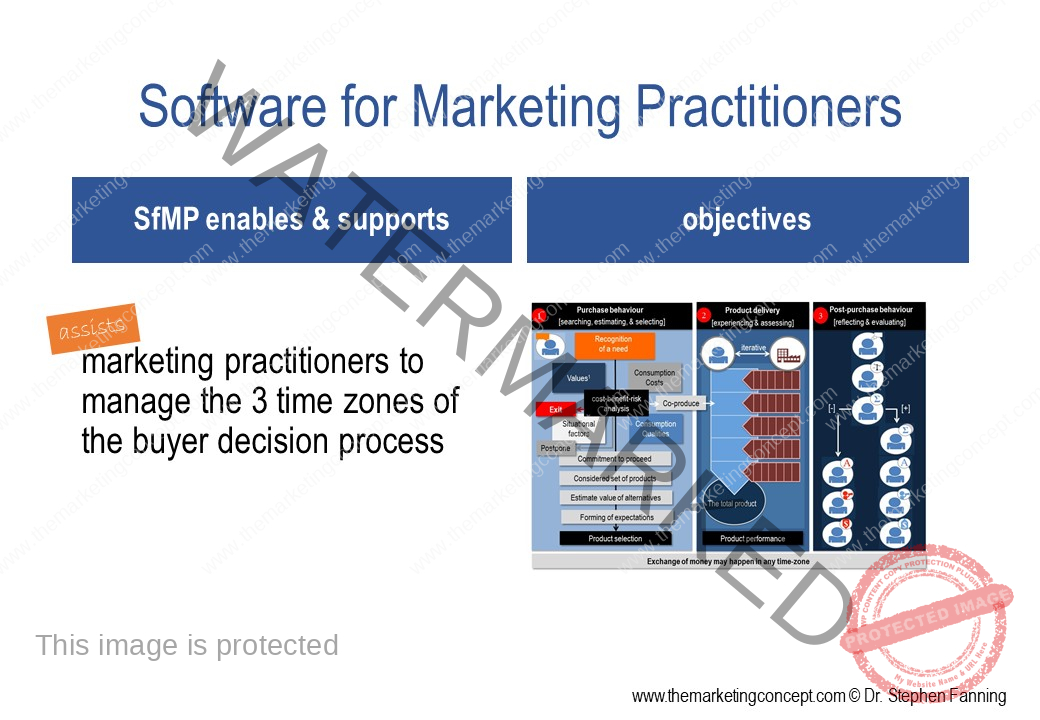
Managing the buyer decision process
When a consumer enters the buyer decision process the start to become aware of a need and/or want and they begin to consider alternatives and alternative organisations. If we consider a specialty product such as ‘solar panels’ it is likely that they will shop around online. Therefore, organisations need to employ software to automate routine tasks and collect data – from this data number of visits to the web-site, number of pages visited, number of downloads are all important. Populating the salespipeline and monitoring saleperson performance time to reach out to the consumers, time to deliver a quote, is all important data to increase conversion rates and help with the various external marketing action plans.
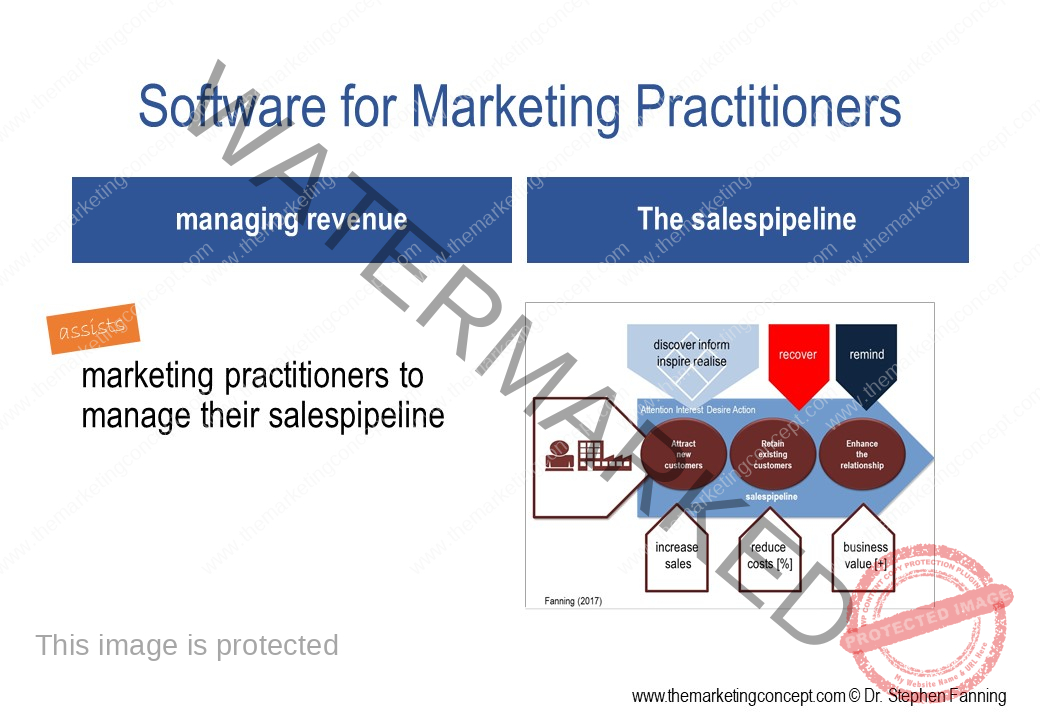
Managing the salespipeline
In the previous slide we discussed the early stage of suspects and prospects , however, software can assist marketing practitioners to identify and recover complaints and to identify loyal customers and also customers that have lapsed. Data is an important part of managing relationship and meeting the communication objectives.
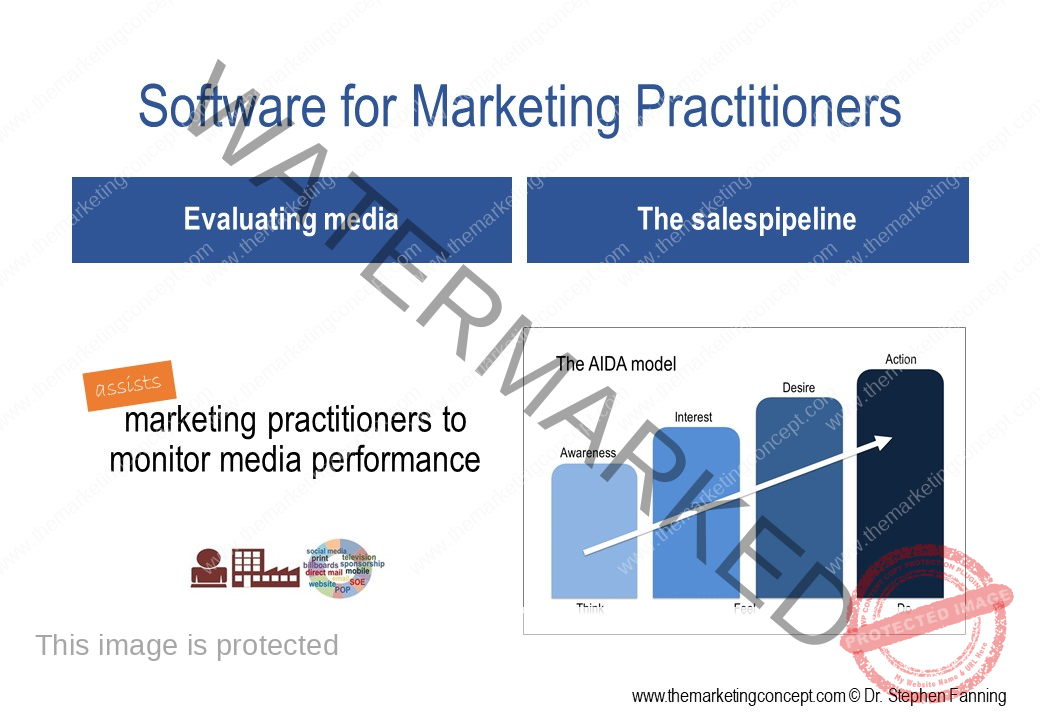
Managing media selection
Every organisation is exposed to a variety of media outlets promoting their product. Whilst a mix of communication tactics is recommended the right mix can only be evaluated through rigorous research.
With exceptions in mind and considering the six pathways to growth – six management considerations emerge: the need to:
- Understand the market and the needs of each segment.
- Embrace the marketing concept
- Employ the right people and provide appropriate training to provide product quality.
- Implement seamless customer friendly processes to accommodate the real-time nature of product delivery.
- When appropriate, invest in the right technology, technology that accommodates the existing culture of the organisation and the existing product delivery process.
- Provide sufficient physical evidence of value to attract and retain customers.
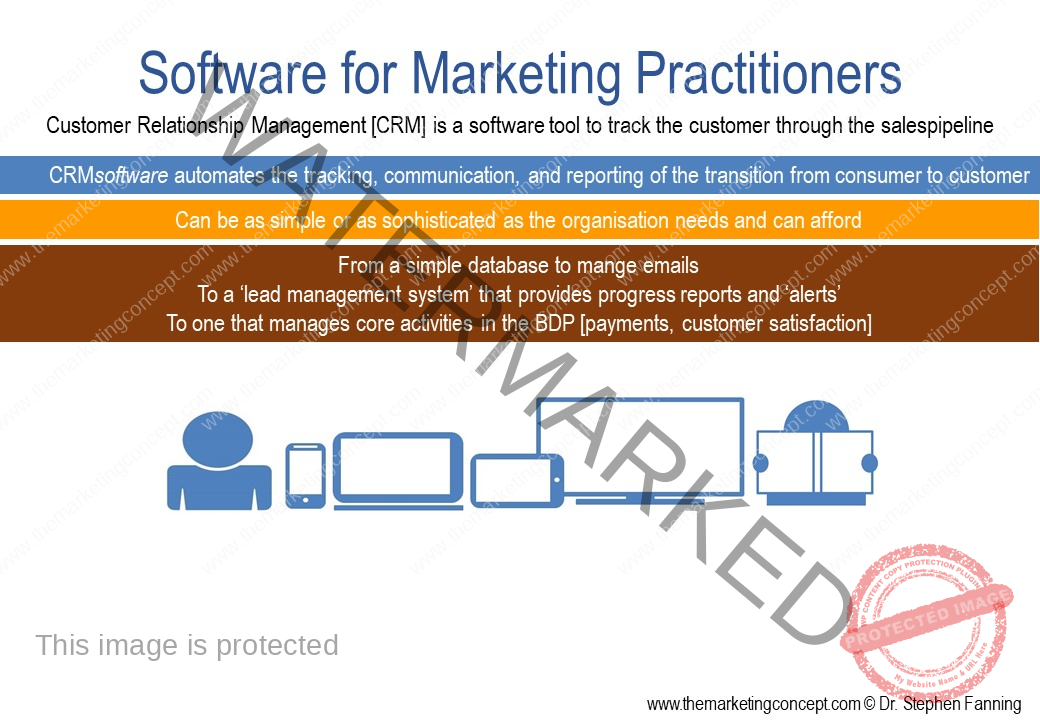
Customer intimacy
Customer intimacy is one of the 9 objectives of marketing practitioners and SfMP [such as CRM] are important relationship tools. We have often stated that there are always situational factors [COMP] that generate exceptions, and this applies to SfMP. The software for retailers will be quite different to wholesalers. Even within the retail sectors there will be different software solutions. The applicability also depends on where an organisation is located in the marketing channel [logistic and retailing are quite different].
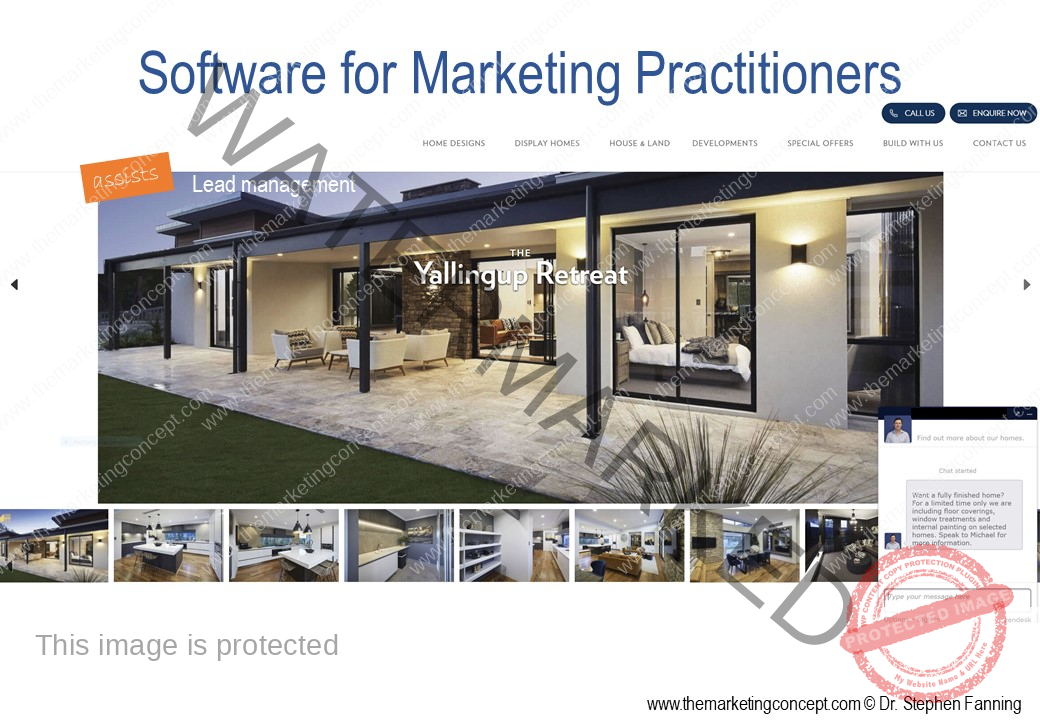
COMP factors influence SfMP
For example: The software required by a new home builder may include the capacity to ‘chat’ online. The chat may be conducted with an actual representative prospecting for leads or an AI response.
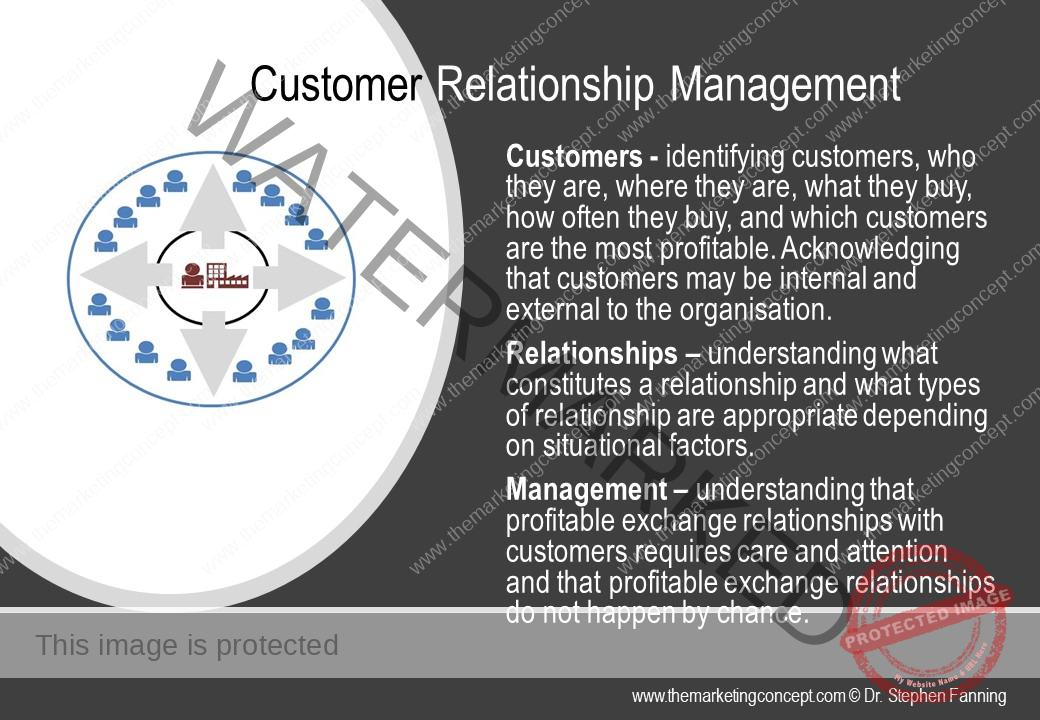
CRM a strategic necessity
Relationship Thinking emerged in the mid-1980s and since the mid-1990s has accelerated in interest, attention and adoption both academically and within organisations. As one would expect, the early academic literature is characterised by the arguments and justification for a new ‘paradigm’ in marketing; however, a web search would now reveal that relationship management is being increasingly adopted by the business.
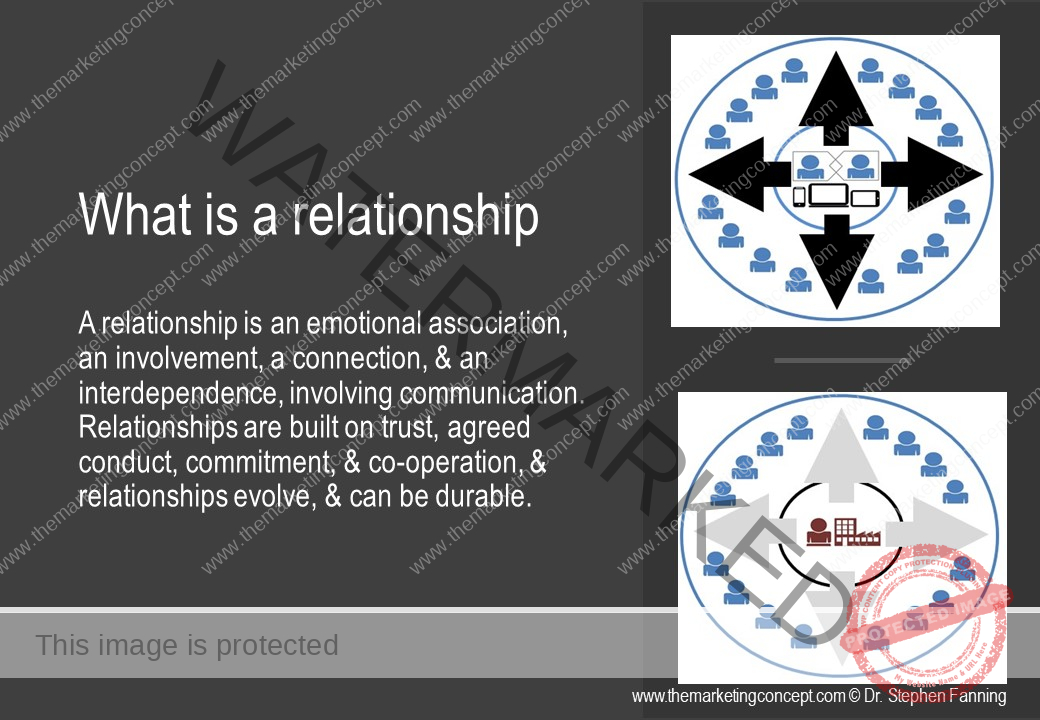
Relationship defined
Organisations vary in size and a quick search on the web will reveal that they types and providers of CRM software are extensive and vary greatly in cost and the service they provide.
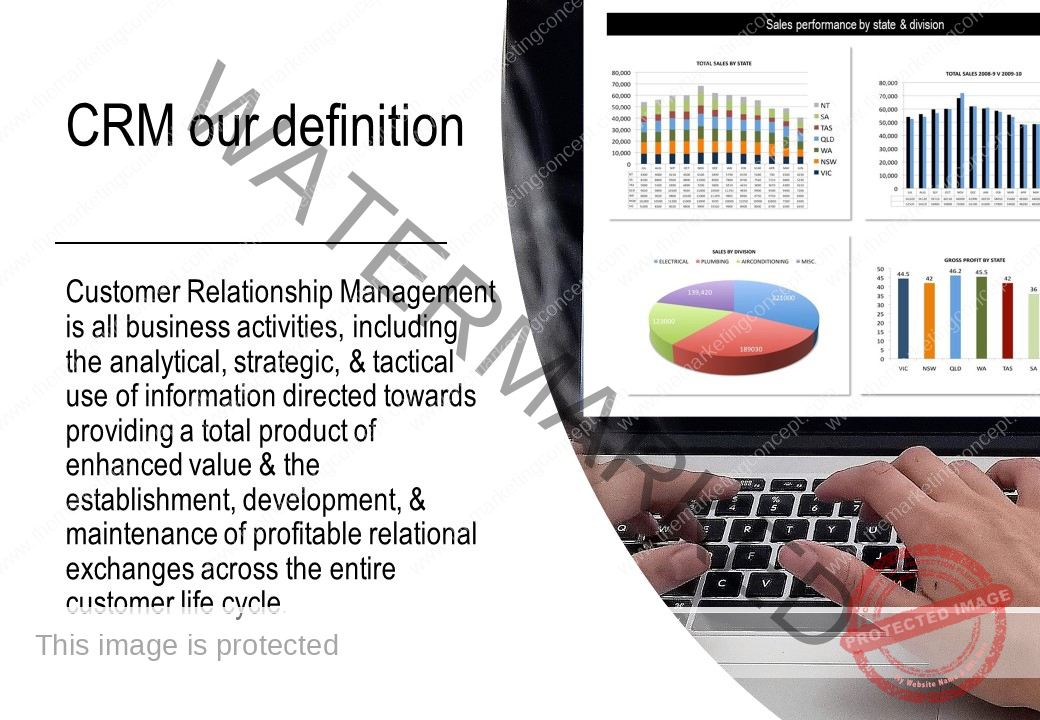
Creating value
Rogers and Pepper (2005) state: Quote: “The only value that your company will ever create is the value that comes from a customer – the ones you have now and the ones you have in the future” (p.26).
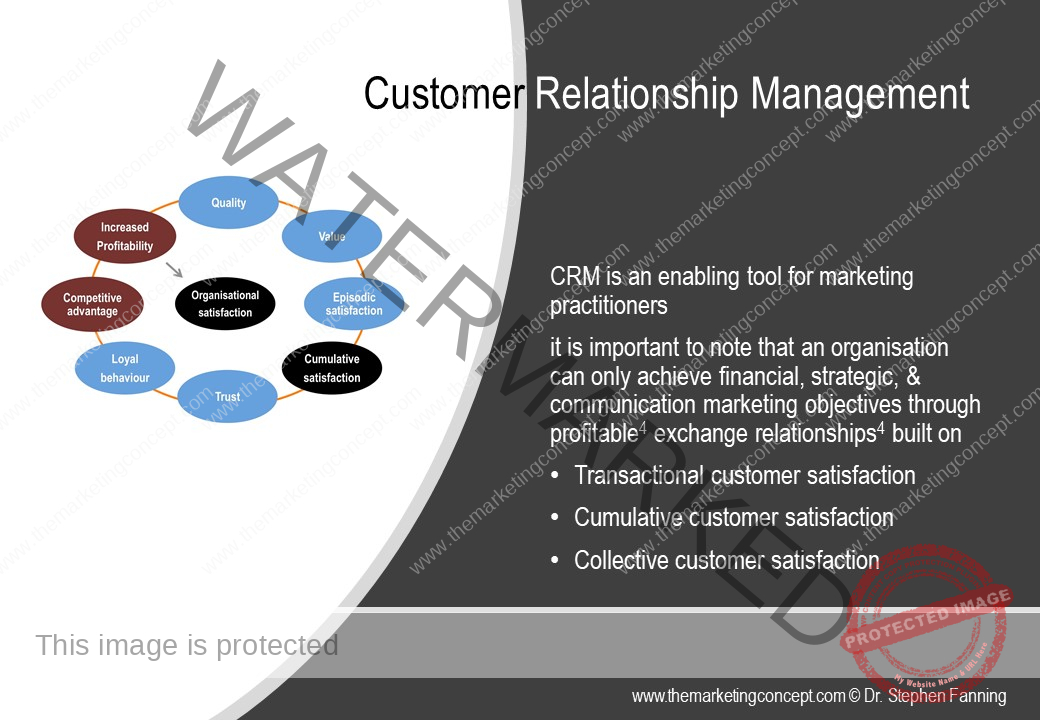
CRM and satisfaction
One of the key tasks for an organisation is to monitor the customer lifetime value of the organisation’s customer base and for most business come to the realisation that customer retention as a key success factor. Reminder advertising is quite different to as it aims to keep the product/brand top of mind.
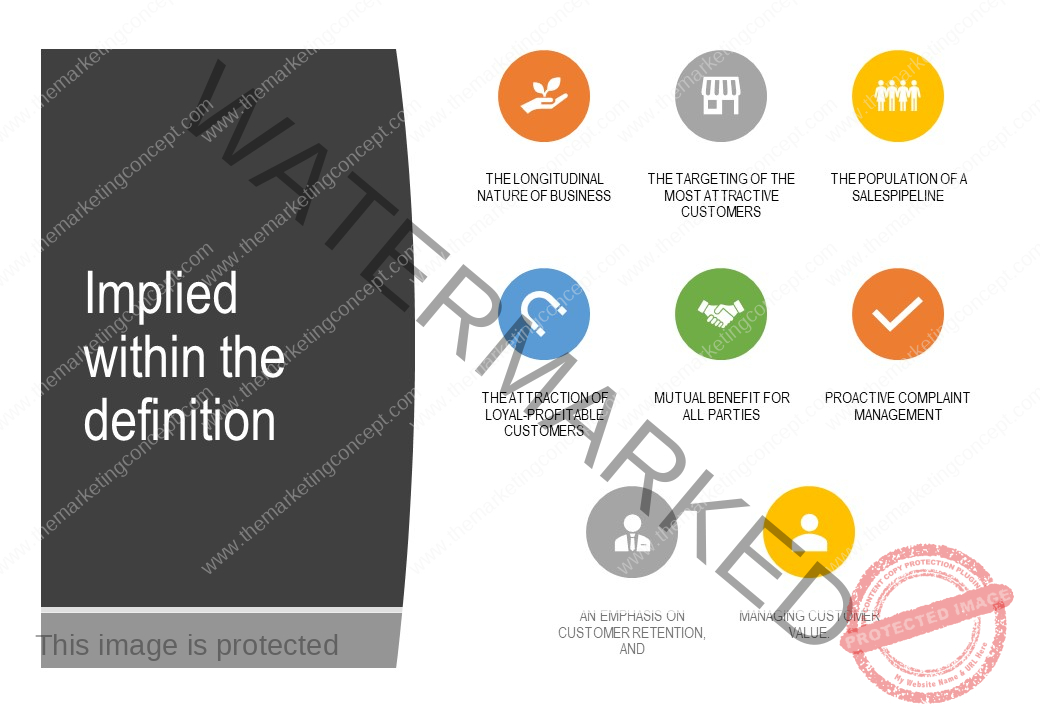
Relationship defined
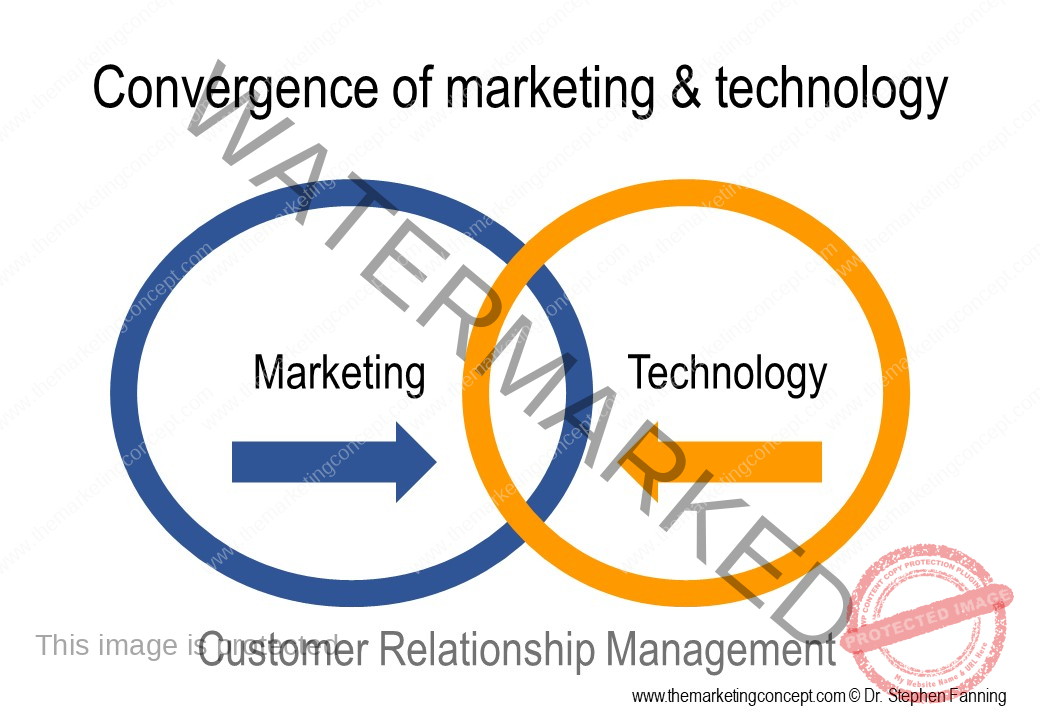
Convergence of marketing and technology
The evolution of Relationship Thinking from a theory within the disciplines of B2B marketing and Services Marketing to a strategic business practice is the result of: A general business need for more efficient and effective methods to do business; The application of academic effort; and The availability and affordability of enabling technologies. We can see that the growth of SfMP is another example of how the 4 recurring patterns [quests] influence not only consumers but also the work of marketing practitioners.
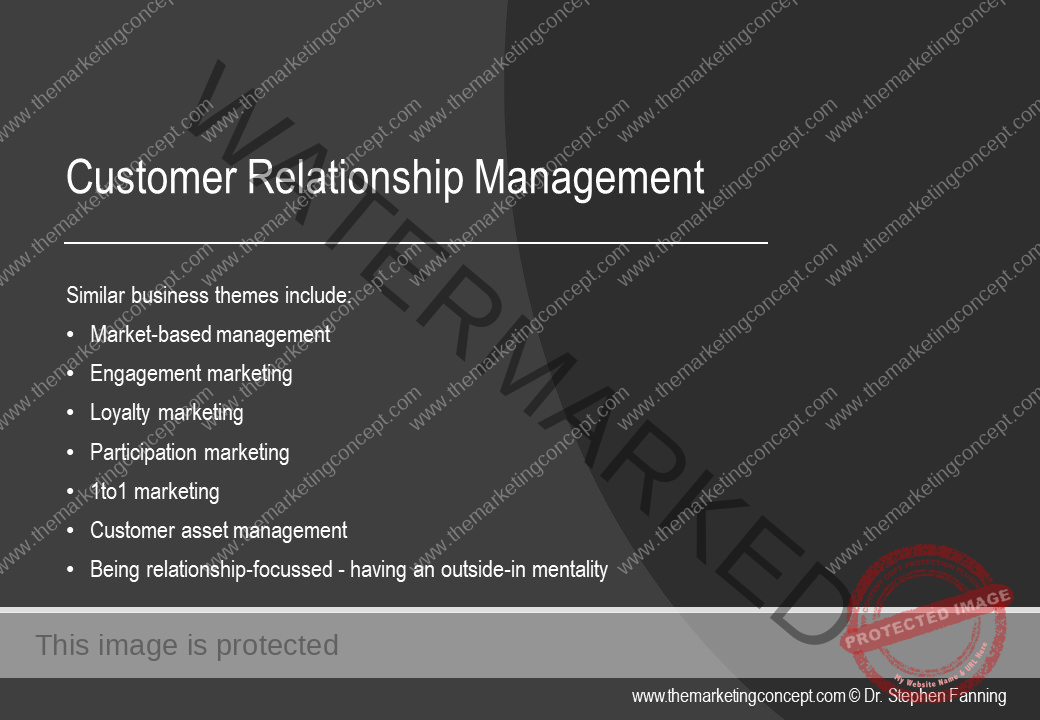
CRM software is also promoted as
The general aims of customer intimacy has created a number of B2B providers – many have ‘coined’ there own names, however, have much in common.
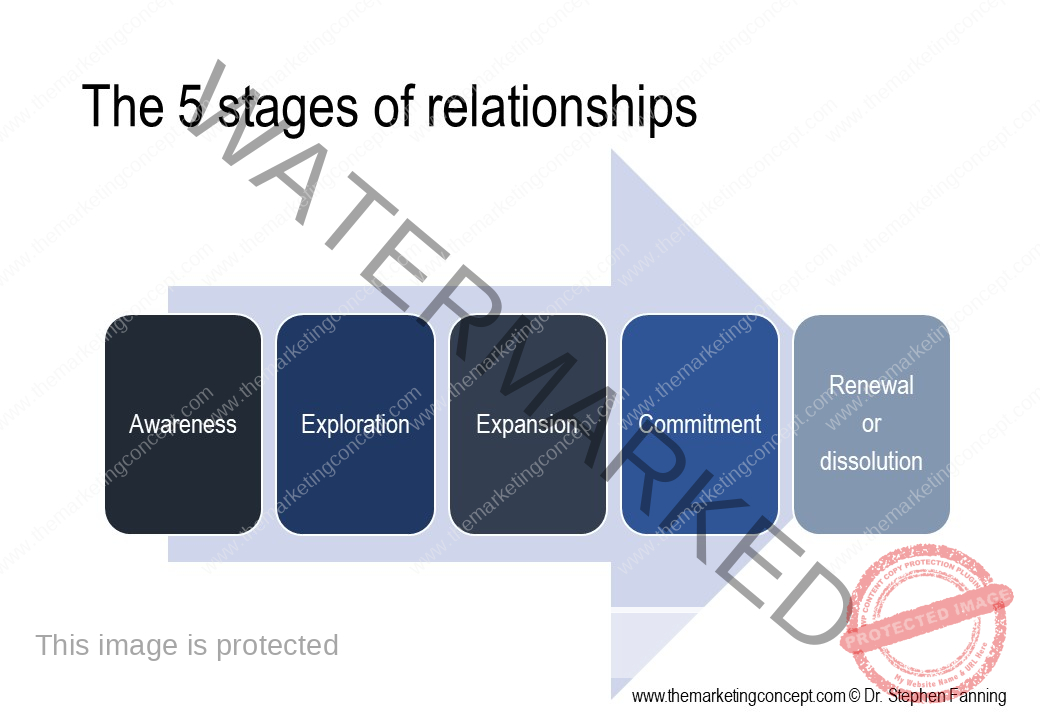
Relationships require organisational energy
Customer intimacy is a organisational objective and a risk reduction strategy for the organisation – Keep in mind that both B2B and B2C customers establish relationships with organisations to reduce the risks of doing business.
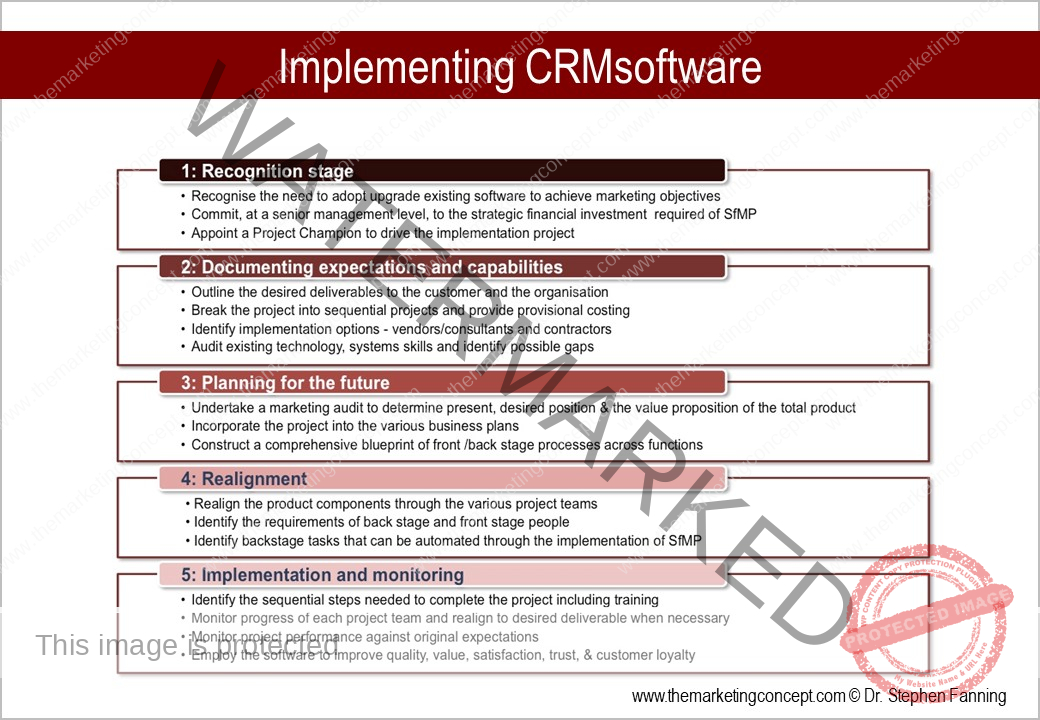
Implementing SfMP
Software is implemented to improve marketing as a process and it is important for it to be as painless as possible. Here are a few suggestions.
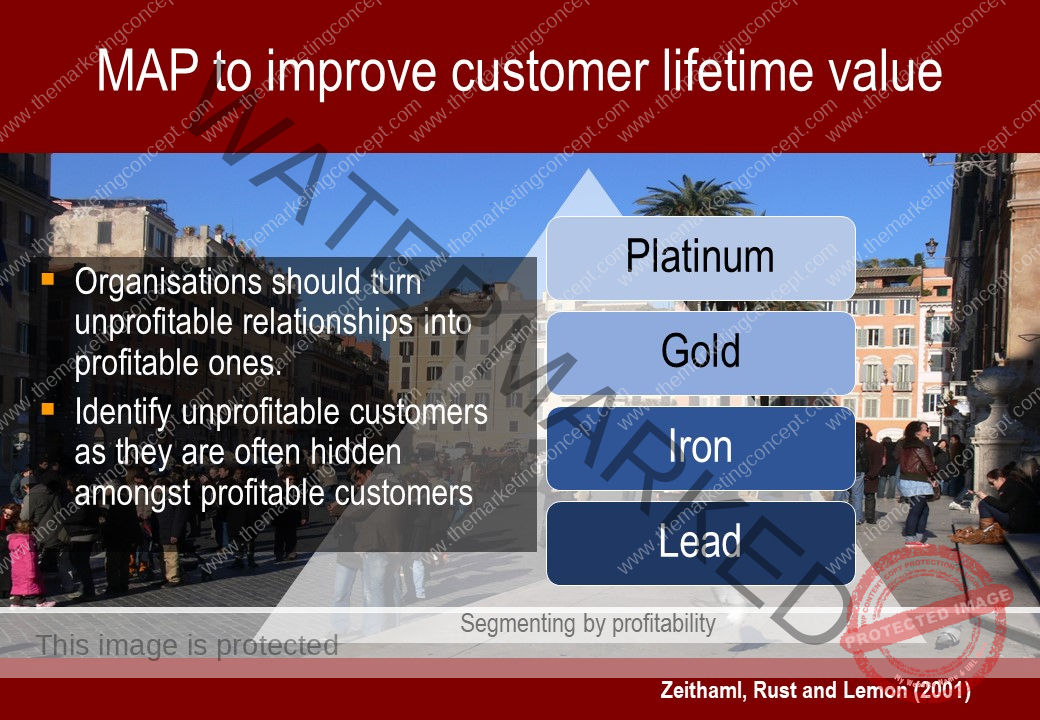
CLV as a MAP
Most organisations will benefit from segmenting and improving profitability, sometimes customers are unprofitabel because they are not a good fit for the organisation. This requires care strategic and tactical planning.
